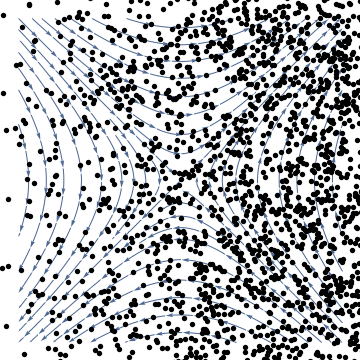
Theoretical modeling of colloids using microhydrodynamics is routine, but application to dense or heterogeneous suspensions is an immense challenge. Our energy methods are a powerful tool to encode complex boundary conditions yet preserve structural detail. Statistical mechanics theories for modeling colloidal suspensions have been previously restricted to equilibrium conditions and statistically homogeneous or bulk suspensions, limiting predictive power to low concentration or relatively simple fluid flow. But many complex fluid flows involve nano-liter quantities, complicated geometries, high concentration, or confinement. My group has built a combined conservation-of-momentum and energy-methods approach that preserves detailed particle microstructure, resulting in a model capable of simultaneously handling flow, many-body interactions, confinement, coupled transport processes, and heterogeneity.